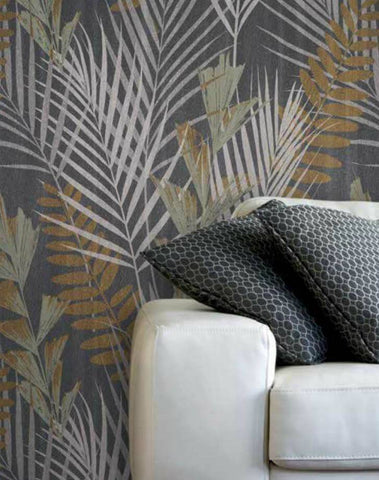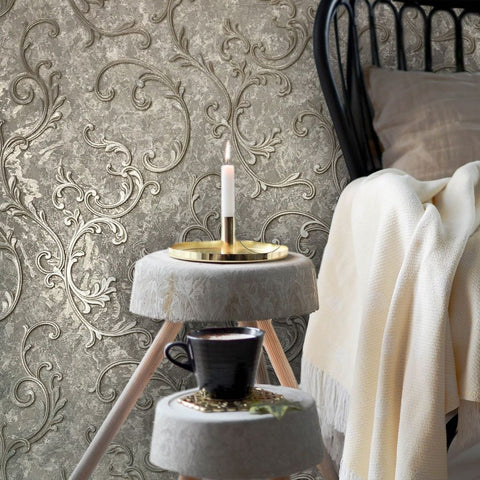
How to hang Non-woven Wallpaper?
The advantages of Non-Woven Wallpaper are obvious: such wallpapers are easy to hang by yourself, they are easy to clean with soap and water, the base - which is non woven - is strong, and is keeping all the stripe of wallpaper together, with no deformations during the process, so when you hang them, your wallpaper stay the same size and shape and doesn't shrink after the drying. Also in our case we are offering wide Non-woven Wallpaper. Their width is 1 meter, which is 33ft. The result - you can stick them faster, then narrower ones. Another advantage is that the edges of Non-woven wallpaper do not need to be pressed hard in order to stick very well, as you need to do with Paper Wallpaper.

All of those benefits will be available to you, if you understand the principle - how to paste Non-woven Wallpaper.
And the first step in this case - to prepare the walls. They must be smooth. Otherwise, the pattern on the wallpaper edges will not be beautiful. Some small imperfections are ok as Non-woven Wallpaper got hte ability to hide some small bumps and small walls cracks.
Step Two - make sure your walls are dry. Then you can prime. Primer is requiring that dust will be removed before. When you are priming walls these walls will absorb less glue. This means that the wallpaper and the wall surface will be better "stuck" to each other. Also, primering the walls will help you to safe your time and energy when you will decide to remove your wallpaper in the future. So it is better to prime. Our Unique Wallpaper glue is designed for any Wallpaper type and it is also a primer. All directions are on the package and you will be able to buy it HERE if needed!
Step Three - measuring. For this it is necessary to measure the height of the wall. Work with each wall separately. If you want to add a decorative strip or a border on the upper edge of the wallpaper, the height should be measured from the floor to the border. If no - then measure till the ceiling.

So, we measured the height. We add 5-10 cm or 3-4 inches. Now you can cut the required number of strips. Remember about the picture integrity, if it is present!
Next, you need to measure 1 meter from the corner of the wall, from which we start to work. At a distance of 1 meter it is necessary to fix the tape with a heavy bolt on the end or just use a level, so we can get a strict vertical stripe. Now it is possible to apply the paste. For Non-woven wallpaper, you will need a special glue or a universal one! We offering one HERE
Step Four - pasting! Pay attention to the wall and wallpaper stripe and make sure that you will hang it 90 degrees to the floor. Don't look at the corner of the room and don't hang your wallpaper according to that line and angle, since sometimes the walls are not really straight and all other stripes that you will hang will be not straight and will look bad and even badder as you move to the other corner. That's why we are using the level. If your level is showing that the corner of your room is not straight and it is not 90 degrees to the floor, then you will need to hang your wallpaper stripe with the excess that you will need to cut later from the side where the corner is. That's the way you will achive a perfect straight line for the future measurings and as a guide line.

Step Five – fix the wallpaper! Make sure every side is straight to the guide line! After fixing every side it is necessary to smooth the stripe immediately after the application. This requires a roller, a spatula or a piece of clean cloth. Then cut off the extra pieces of wallpaper at the top and bottom. This requires a wide metal spatula and a sharp knife. You can cut the wallpaper excesses that you will have imidiately.
Each next stripe should be applied close to the other, so you will not see the joins. If you need to mathch the pattern do not forget to do that! You can't smooth the stripe of wallpaper with hands or tools, that are not designed to be used for that purpose, since you can deform the wallpaper!
The stripe is recommended to paste at the corners such way, that on the other wall it will remain for 2-3 centimeters.
We wish you successful experiments!
